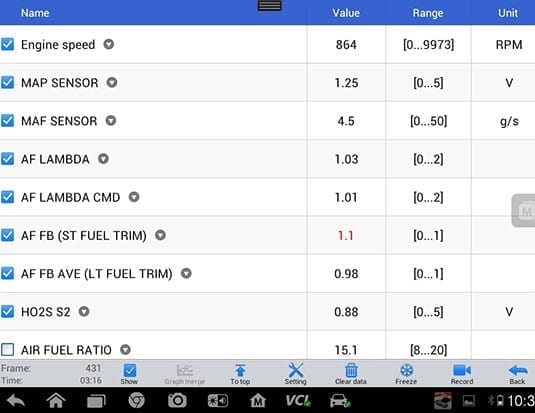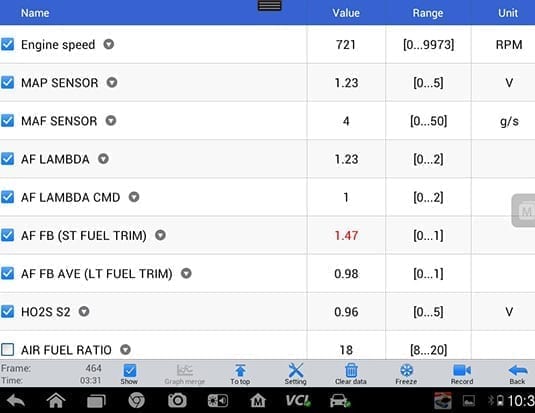A detailed analysis of a rough running CR-V allowed us to pinpoint the problem.
Sometimes, when dealing with a diagnostic situation that has more than one path to take, it requires some critical thinking to ensure you start off on the right track.
We recently had the opportunity to look at a rough running 2009 Honda CR-V displaying a check engine light on the instrument panel.
We scanned the vehicle for codes and found codes for misfires and a lean code. (Figure 1). Now the question was, do we chase the lean codes or do we chase the misfires?

Chicken and egg scenario
The thinking here is that the lean code could cause the engine to misfire but the misfire could also cause the lean code—essentially a chicken and egg scenario. In order to sort this out, the vehicle was started from cold and allowed to warm up. We noticed that when the engine was started, it ran fine. However, after running for two to three minutes, the engine started to run rough and eventually it developed a misfire. This observation led us to go after the lean code. When the vehicle was started cold the engine was running in open loop. Once the engine temperature started to rise the engine went into closed loop, and then it started to run rough. If the engine had misfired or run rough while in open loop then we would have gone after the misfire.
In order to get a better understanding of why the vehicle was running lean, we started by looking at the vehicle fuel trim numbers. Figure 2 shows the vehicle just as it enters closed loop, and figure 3 shows the vehicle about a minute later. The car is running normal in figure 2 but running really rough in figure 3.
ECM satisfied
If you observe the data in figure 2, you can see that the ECM is commanding a fuel mixture of Lambda 1.01 and it is getting a fuel mixture of 1.03. This represents a 2% difference and well within normal limits. You can also see by observing the fuel trim numbers that the ECM is satisfied with the fuel mixture. STFT shows a 1% add in fuel and LTFT shows a 2% subtraction in fuel. These are good numbers.
Now observe the reading when the car is running badly. The ECM is commanding a fuel mixture of Lambda 1.0 but is getting a fuel mixture reading of Lambda 1.23 from the front Air Fuel sensor. According to the AF sensor, the engine is 23% lean. Fuel trim shows that the PCM is trying to correct the problem. STFT has gone to 1.47 which means that the ECM is adding 47% more fuel than the base fuel schedule calls for.

Mismatched readings
How can the ECM be adding so much fuel and yet the engine still shows lean? The reality is it can’t. So, either the engine is not really lean or the ECM is not able to add the fuel that it says it’s adding.
To help determine where the actual issue is, take a look at the rear O2 sensor. The rear O2 sensor is reporting that the engine is running rich. The ECM says it is adding fuel and the rear O2 sensor agrees. The front AF sensor is reporting lean. Based on the ECM data and the rear O2 sensor reading rich, it is clear that the AF sensor is reporting incorrectly. A new AF sensor was installed on the vehicle and the CR-V returned to normal operation.
Thinking it through enabled us to pinpoint the bad AF sensor.


